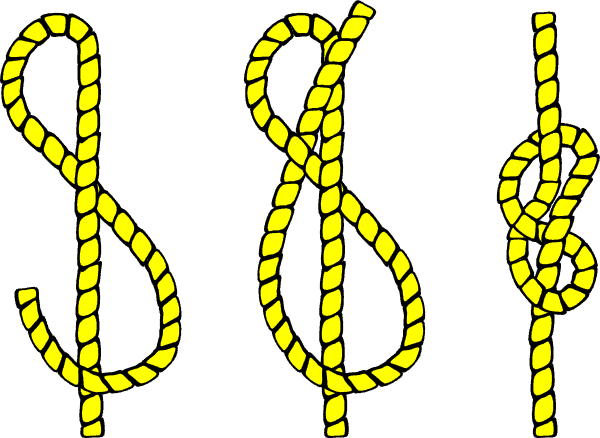

In particular, we shall take a look at the bowline, a most useful knot. This research was partially supported by the National Science Foundation Grant DMS -2528707.įor this section it is recommended that the reader obtain a length of soft rope for the sake of direct experimentation.

In the meantime, it gives me great pleasure to thank Vaughan Jones, Ed Witten, Nicolai Reshetikhin, Mario Rasetti, Sostenes Lins, Massimo Ferri,Lee Smolin,Louis Crane,David Yetter, Ray Lickorish, DeWitt Sumners,Hugh Morton, Joan Birman, John Conway, John Simon and Dennis Roseman for many conversations related to the topics of this paper. That will have to wait for the next time! I wish that there had been space in this essay to cover these matters. It is a current topic of my own research and the research of many others. There are many aspects to this idea of physical knots. Or one can think of the knot as made of thick rope and ask for an "ideal" form of the knot with minimal length to diameter ratio. Then one can put electrical charge on the knot and watch (in a computer) the knot repel itself to form beautiful shapes in three dimensions. There is also a rich vein of knot theory that considers a knot as a physical object in three dimensional space. This essay concentrates on the construction of invariants of knots and the relationships of these invariants to other mathematics (such as Lie algebras) and to physical ideas (quantum mechanics and quantum field theory).

In this way knots have become a testing ground not only for topological ideas but also for the methods of modern theoretical physics. Transpositions of this idea occur throughout, involving ideas from quantum mechanics (Sections 8 and 9 ) and quantum field theory (Section 10 ). In the case of the bracket model this summation is finite and purely combinatorial. The idea for the bracket model and its generalisations is to regard the knot itself as a discrete physical system - obtaining information about its topology by averaging over the states of the system. Sections 6 and 7 provide an introduction to Vassiliev invariants and the remarkable relationship between Lie algebras and knot theory. The theme of a relationship of knots with physics begins already with the Jones polynomial and the bracket model for the Jones polynomial as discussed in Section 5. Later sections introduce more technical topics. The familiar world of string, rope and the third dimension becomes an inexhaustible source of ideas and phenomena.Īs indicated by the table of contents, Sections 2 and 3 constitute a start on the subject of knots. Even the act of tying a shoelace can become an adventure. I hope to give the flavor of these extraordinary events in this exposition. This essay constitutes an introduction to the theory of knots as it has been influenced by developments concurrent with the discovery of the Jones polynomial in 1984 and the subsequent explosion of research that followed this signal event in the mathematics of the twentieth century. Topological Quantum Field Theory - First Steps Invariants of Knots and Links - A First Pass


 0 kommentar(er)
0 kommentar(er)
